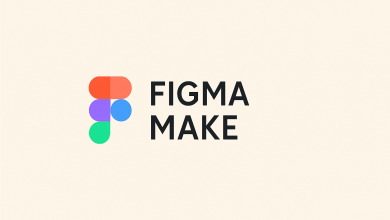
Fraud is surging for financial institutions even as check usage continues to decline. At the same time, the average value of each check is rising, making fraud increasingly costly. The Federal Reserve’s 2022 Payments Study found that while check volumes fell from 14 billion in 2018 to 11.2 billion in 2021, the average value per check rose 27%. Higher values make every transaction more consequential, and fraudsters have taken notice. The U.S. Treasury Department reports that check fraud has surged 385% since the pandemic, fueled by schemes designed to bypass outdated defenses. This surge has exposed a widening trust gap.
Challenges of Implementing Fraud Prevention
Financial institutions face a delicate balancing act when it comes to fraud prevention. Strict controls can generate false positives, flagging legitimate transactions and frustrating customers. Too lenient an approach, on the other hand, leaves financial institutions vulnerable to costly fraud and regulatory scrutiny. Finding the right equilibrium is essential to protect both assets and customer trust. Meeting these expectations presents a persistent challenge that traditional systems often struggle to address, requiring financial institutions to balance rigorous oversight with frictionless customer experience.
Customers expect more than just security, they demand seamless experiences across every channel, from branch visits and ATMs to mobile apps and remote deposit capture, and even minor delays can have a negative impact on confidence. Regulators, meanwhile, are escalating scrutiny: in June 2025, the Federal Reserve, the OCC and the FDIC issued a joint request for input on new actions to combat payments fraud, highlighting check fraud as a priority. Financial institutions must rebuild trust in checks as a secure payment method while staying compliant and efficient.
Legacy Systems are Falling Behind
Nearly half of financial institutions still rely primarily on rules-based systems for fraud detection, according to a Mastercard survey, while 37 percent report using AI and machine learning. Traditional rule-based and template-driven fraud detection systems struggle to keep pace with modern threats. Static templates cannot adapt quickly to sophisticated fraud schemes, while manual review creates bottlenecks that increase operational costs and delay decision-making. As a result, financial institutions often experience inefficiencies and higher risk exposure.
Compliance adds another layer of pressure to legacy systems. Meeting KYC, AML, SOX and FFIEC requirements at scale is difficult without automation and transparency, leaving financial institutions vulnerable to regulatory scrutiny. The trust gap is widening, and reliance on legacy tools risks operational inefficiencies, frustrated customers and growing exposure to evolving fraud schemes.
The Power of AI in Check Fraud Prevention
Machine learning (ML) is redefining how financial institutions approach check fraud prevention. Unlike rule-driven or template-based systems, ML models evolve with each transaction, continuously learning to recognize new fraud tactics as they emerge. This adaptability is essential as fraudsters quickly shift methods, leaving static defenses outdated and vulnerable.
Modern ML solutions are built for recognition processes, including signature verification, document authentication, handwriting consistency, check washing, forgery, counterfeiting, phishing, mobile deposit fraud, altered screenshots and synthetic identity check fraud. Behavioral pattern recognition, such as signing speed, stroke order and completion sequence, adds another layer of verification to detect inconsistencies even when reference data is limited. By combining multiple recognition techniques, institutions can monitor transactions effectively and maintain strong oversight.
ML also enables high-accuracy anomaly detection while minimizing disruption to legitimate transactions. Confidence scoring allows thresholds to be calibrated for automatic approval, manual review, or escalation. Financial institutions can tailor models to their unique fraud guidelines, using custom algorithms to dramatically reduce false positives. Detailed confidence reports support informed, risk-based decisions, aligning fraud prevention with each financial institution’s operational priorities.
Scalability and explainability further strengthen this approach with ML-powered recognition applied consistently across mobile deposits, branch capture, ATMs and back-office operations, processing up to 25 million checks per day without sacrificing accuracy. Transparent outputs ensure compliance teams and auditors can verify and trust every decision, while real-world results show up to 95% reductions in manual document handling, faster fraud resolution and fewer false positives. These improvements save costs while protecting customer experience, reinforcing trust in checks as a secure and reliable payment method.
Smart learning is built into these systems, with models continuously improving from each institution’s own data. Institutions remain in charge of decisions, as the technology supports existing workflows by accelerating recognition and highlighting potential fraud rather than replacing human judgment. This approach allows them to leverage advanced ML safely while preserving oversight and meeting regulatory requirements.
Yet technology alone is not enough, lasting protection requires continuous refinement and trusted partnerships. Solutions must be backed by proprietary, recognition-specific technology and supported by providers who stay engaged throughout the journey, helping institutions adapt and evolve as fraud tactics change.
Reinventing Trust in Check Fraud Prevention
AI is not only detecting fraud but restoring confidence in checks as a secure payment channel. Smart learning ML enables financial institutions to meet regulatory demands, reduce fraud losses and deliver a seamless customer experience while keeping decision-making firmly in human hands. By integrating ML-driven tools across all processing channels, financial institutions can transform check fraud prevention from a reactive challenge into a competitive advantage built on trust. In an era of increasingly sophisticated schemes, this approach ensures checks remain a reliable, fraud-resistant payment option, improving operational efficiency and reinforcing confidence with customers, regulators and stakeholders alike.
About Author:
Emiliano Giacchetti is the CEO of ParaScript, an AI-powered document processing company that processes large volumes of documents at high speed and accuracy. Emiliano has over 20 years of experience leading strategic and operational turnarounds across industries, including senior roles at McKinsey & Company, GLG (Gerson Lehrman Group), and Civitas Learning, and founding and co-founding several companies, including a strategy consulting firm and a growth equity fund. He holds dual M.S. degrees in Mechanical Engineering from the University of Rome Tor Vergata and the University of Illinois Chicago.





